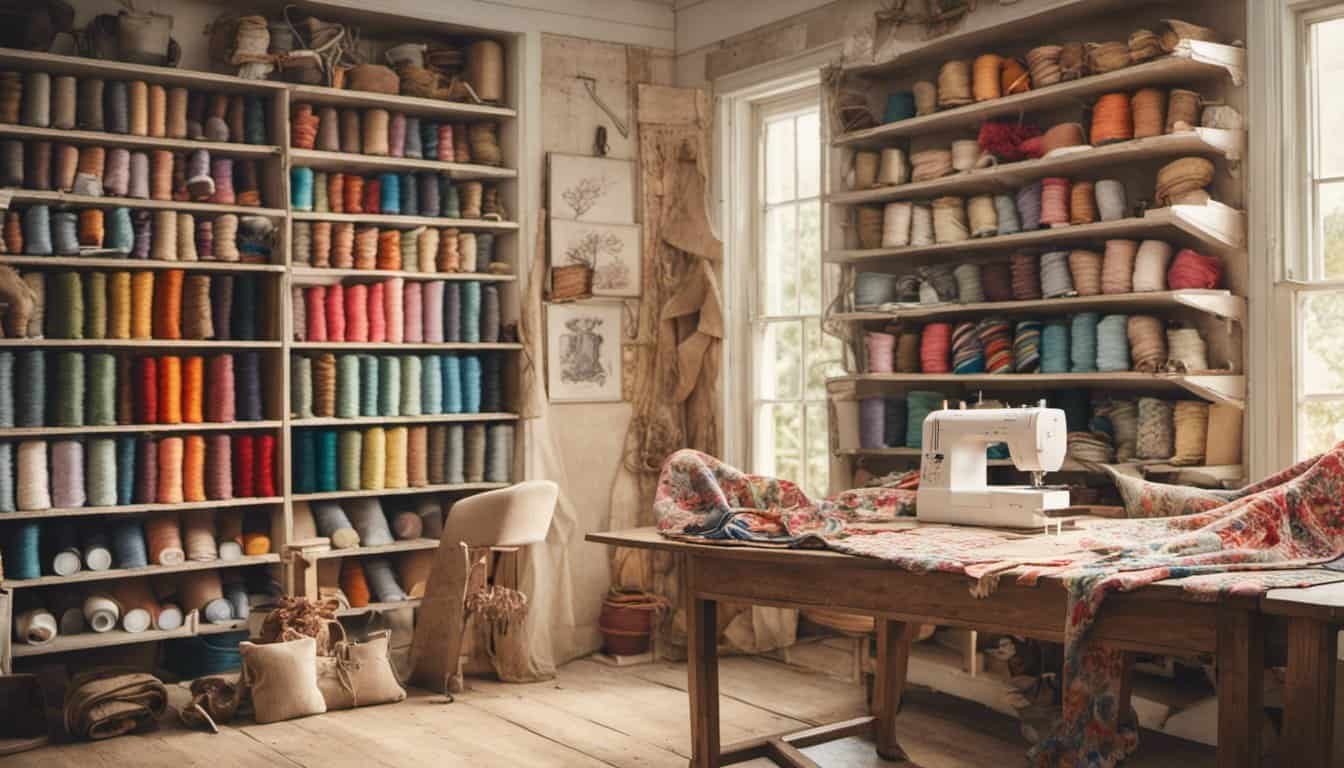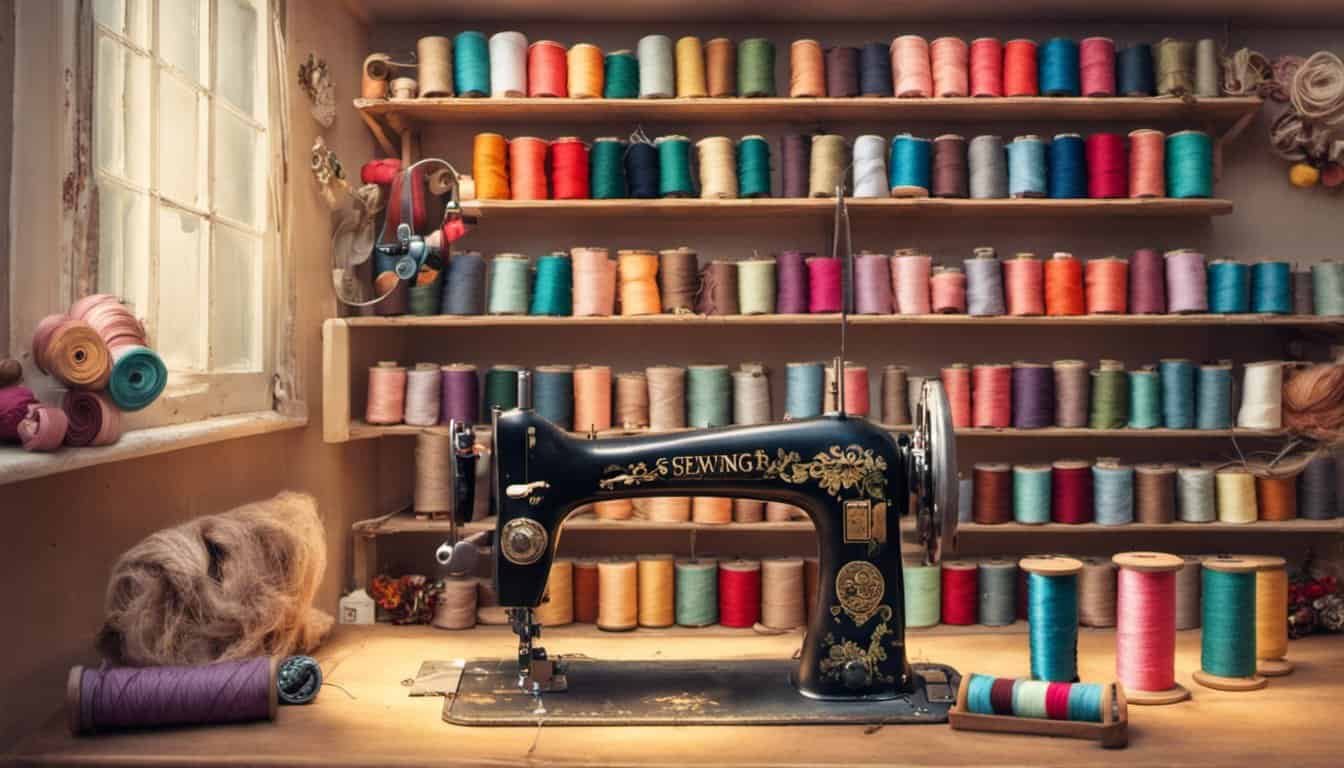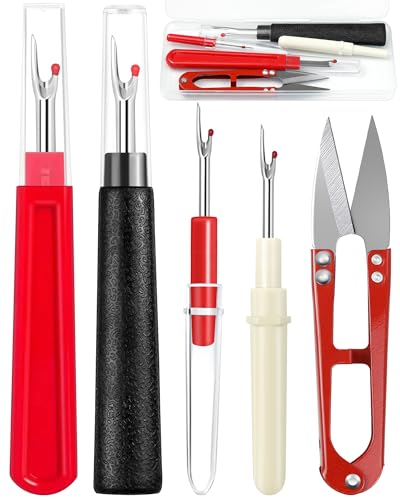Sewing your own reversible vest is such a fun and rewarding project. Not only do you get a stylish, versatile piece for your wardrobe, but you also have the satisfaction of knowing you made it yourself. Whether you’re a seasoned sewist or just starting out, creating a reversible vest lets you experiment with fabrics and designs while honing your skills.
Materials Needed For Sewing A Reversible Vest
Each material plays a critical role in creating a durable and stylish reversible vest. Here’s what I use:
- Fabric
Select two fabrics of similar weight, 1-1.5 yards for each. For example, choose cotton, flannel, or lightweight denim. Pick prints or colors that complement each other.
- Thread
Use high-quality, all-purpose thread matching your fabrics’ colors. Dual shades may be needed for a reversible design.
- Pattern
Obtain a reversible vest pattern appropriate for your size. Commercial patterns or printable PDFs work great.
- Sewing Machine
Make sure your machine can handle various fabric weights. Straight stitches are essential for this project.
- Pins or Clips
Use pins or fabric clips to hold layers together securely while sewing.
- Scissors or Rotary Cutter
Use fabric scissors or a rotary cutter with a cutting mat for clean, precise cuts.
- Iron and Ironing Board
Press fabric seams flat during the process to achieve neat edges.
- Interfacing (Optional)
Add lightweight fusible interfacing for extra structure, depending on your fabrics’ stiffness.
- Chalk or Fabric Marker
Trace pattern edges onto fabric accurately with washable chalk or a fabric marker.
Each of these items ensures smooth crafting and a polished final product.
Preparing Your Pattern And Fabric
A seamless sewing experience begins with proper preparation of the pattern and fabric. Taking time to ensure accuracy here simplifies assembly later.
Choosing The Right Fabric
Selecting fabrics with similar weights achieves consistency in the vest’s fit and drape. Lightweight cotton, linen, or flannel work well for reversibility. Pre-wash and iron fabrics to prevent shrinkage or distortions. Match colors or patterns that complement each other for a stylish reversible effect, such as pairing solid and printed designs.

Cutting The Fabric And Pattern Pieces
Lay out fabric on a flat surface and pin the pattern securely to avoid shifts. Follow the pattern’s grainline markings for proper alignment with the fabric’s weave. Cut pieces using sharp fabric scissors or a rotary cutter for clean edges. Label each piece on the wrong side with a fabric marker to differentiate the reversible sides and ensure no mix-ups during assembly.
Step-By-Step Guide On Sewing A Reversible Vest
Sewing a reversible vest involves creating two distinct layers and assembling them into a polished, functional garment. With precise sewing techniques and attention to detail, each step ensures professional results.
Sewing The Outer And Inner Layers
I start by sewing the outer and inner layers separately. After placing the fabric pieces for each layer right sides together, I stitch along the side and shoulder seams using a 1/4-inch to 1/2-inch seam allowance, depending on the pattern. I press the seams open with an iron to create a smooth, flat finish.
For curved edges, like the neckline or armholes, I clip or notch the seam allowances after stitching. This helps reduce bulk and ensures clean lines when turned right side out. I follow the same steps for both fabric layers.
Joining The Layers Together
Once both layers are complete, I pin or clip them together with right sides facing each other. Starting at one side seam, I sew around the edges of the vest, leaving a small gap (about 3 to 4 inches) at the hem for turning.
« Master Sewing a Baby Blanket: A Soft Project That’s Easy, Affordable, and Full of Love
Making a Quilted Placemat: A Simple Guide to Transform Your Table in No Time »
Before turning the vest inside out, I trim excess seam allowances and clip any curves or corners for a smoother finish. After carefully pulling the fabric through the gap, I gently push out the corners with a blunt tool to achieve crisp edges.
Adding Finishing Touches
To close the turning gap, I fold the raw edges of the gap inward and secure them with clips or pins. I sew the opening shut using a slip stitch for an invisible finish or machine stitch for a quicker option.
Finally, I topstitch around the entire vest, staying close to the edge. This step not only secures the layers but also gives the vest a polished look. After pressing the finished vest with a warm iron, it’s ready to wear, showcasing both sides for maximum versatility.
Tips For Success When Sewing A Reversible Vest
- Choose complementary fabrics. Selecting fabrics with similar weights ensures balanced layers that lie neatly together. Fabrics like lightweight cotton and linen work well, as they’re easy to sew and comfortable to wear.
- Use high-quality tools. Sharp scissors or a rotary cutter provide clean fabric edges, and fine pins or clips prevent distortion. A good iron helps achieve crisp seams and a polished look.
- Mark your pieces clearly. Label pattern pieces after cutting to avoid confusion. For example, mark the inside and outside layers using chalk or a fabric marker to keep track of your reversible sides.
- Press seams as you sew. Pressing seam allowances open or towards one side ensures a neat finish and simplifies topstitching later. This step improves both appearance and durability.
- Trim seam allowances carefully. Cut excess fabric at corners and curves without cutting through the stitching. This technique reduces bulk and helps curved edges look smooth when turned.
- Leave a generous turning gap. Allow enough space to turn the vest inside out after sewing. A 4-inch opening typically works well for most patterns.
- Hand-stitch or topstitch the gap. When closing the turning opening, use an invisible hand stitch for hidden seams or a topstitch for a decorative edge that secures the layers.
- Test tension and stitch length. Before sewing, test the sewing machine on fabric scraps to adjust tension and stitch length. This prevents skipped stitches and ensures even seams.
- Pin layers securely. Align and pin the inner and outer layers carefully before sewing to keep the fabrics from shifting during assembly.
- Take your time with curved edges. Go slowly around curves, easing the fabric under the presser foot. This results in smoother, professional-looking curves.
Following these tips enhances the sewing process and ensures a reversible vest that’s both functional and stylish.
Common Mistakes To Avoid
Avoiding mistakes when sewing a reversible vest saves time and prevents frustration. These common errors can impact the overall result.

- Using fabrics with different weights
Mismatched fabric weights lead to uneven seams and an unbalanced vest. Choose fabrics like cotton, linen, or flannel with similar thicknesses for consistent results.
- Skipping pre-washing and ironing
Skipping fabric preparation causes shrinkage or distortion after sewing. Pre-wash and iron both fabrics to maintain their shape and ensure a smooth finish.
- Rushing pattern placement
Incorrect pattern placement wastes fabric and creates poorly aligned seams. Lay fabrics flat, align patterns with the grainline, and double-check orientation before cutting.
- Forgetting to label pieces
Unlabeled fabric pieces complicate the assembly process. Mark each cut piece clearly with chalk or a fabric marker to keep track of corresponding layers.
- Leaving a small turning gap
A small turning gap makes flipping the vest challenging. Leave a gap of at least 4-5 inches, especially with thicker fabric choices.

- Neglecting to trim seam allowances
Leaving bulky seam allowances prevents clean edges and smooth curves. Trim allowances carefully, especially around curves, to reduce bulk and improve flexibility.
- Skipping pressing steps
Skipping pressing between steps creates uneven seams and a less professional appearance. Press seams open and flat as you sew for precise finishes.
- Ignoring topstitching tension
Uneven topstitching tension ruins the vest’s polished look. Test machine settings on scrap fabric to ensure stitches lie flat and even.
Paying attention to these details ensures a seamless and high-quality reversible vest.
Conclusion
Sewing a reversible vest is such a rewarding project that combines creativity, practicality, and skill-building. Whether you’re experimenting with fabrics or perfecting your techniques, the process offers plenty of room for personal expression.

I love how this project results in a versatile piece that can elevate any outfit while showcasing your handiwork. With a bit of patience and attention to detail, you’ll have a beautifully crafted vest that’s both stylish and functional.
Take your time, enjoy the journey, and don’t forget to celebrate your finished creation. Happy sewing!

















